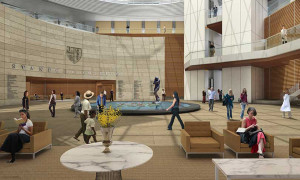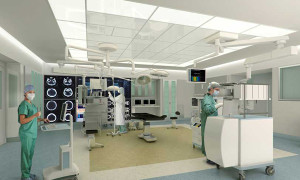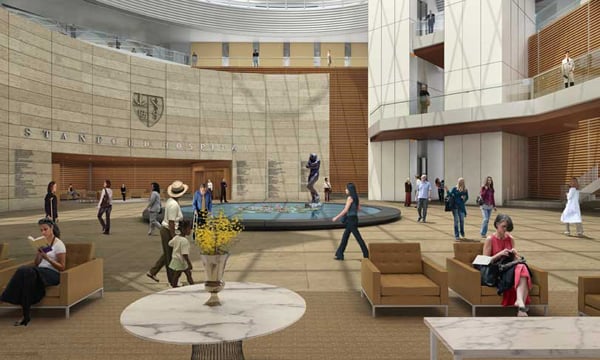Correction: The original version of this article cited an estimate for the cost of the new hospital as “$2 to $3 billion.” This estimate refers instead to the cost to transform the hospital facilities, complete seismic retrofit work, and fund medical research and education.
With a new, 823,000-square-foot Stanford Hospital, which will be partially funded by a recently announced $1 billion fundraising campaign, Stanford Medicine aims to connect “science and humanity in a caring and dignified manner,” according to School of Medicine Dean Philip Pizzo.

President John Hennessy announced the Campaign for Stanford Medicine two weeks ago as part of an initiative to build the new hospital and invest in medical teachings and research.
Stating that the “the new hospital is not just about technology,” Pizzo said that the specific needs for the fundraising campaign range from meeting state building codes to pioneering patient care.
“The reasons for building the hospital are multiple,” Pizzo said. “It begins with the need for it to follow seismic regulations, but more importantly, it is for the benefit of the community.”
“Providing the most advanced health care possible to people — locally, nationally and globally — will be one of the great challenges of this century,” Hennessey said in his campaign launch speech on May 7. “The Campaign for Stanford Medicine draws upon our particular strengths — the proximity of the University to its hospitals and clinics — to focus on this issue and better serve the public. It will allow us to seek solutions to some of medicine’s most daunting problems, and it will begin in our own community with the new Stanford Hospital.”
The $1 billion campaign does not reflect the total cost to “to transform the hospital facilities, perform seismic retrofit work, and fund medical research and education,” according to a San Jose Mercury News article. The total may amount to between $2 and $3 billion.
Half the amount the campaign hopes to acquire has already been raised through both corporate and private donations. To date, the University has received corporate donations from Apple, Hewlett-Packard, eBay, Oracle, Intuit, Nvidia and Intel. In total, these companies have pledged over $175 million under the Stanford Hospital Corporate Partners Program.
Additionally, three families — the Tashia and John Morgridge family, the Anne Bass M.A. ‘07 and R

obert Bass MBA ‘74 family, and the Christopher Redlich ‘72 family — have each contributed $50 million.
Stanford Medicine intends for the new hospital to become a pioneer in the medical field by incorporating state-of-the-art technology, such as integrated medical facilities, advanced imaging, genome sequencing and more effective emergency care.
Pizzo highlighted the adaptable nature of the new hospital, which he said “will have the best technology, but will also enable the introduction of new technology in the years and decades to come.”
He emphasized that while the new hospital will be a leader in medical technology, it will also lead the way in patient care. Features to improve the quality of life for patients, such as healing gardens and private rooms for visiting families, will be incorporated into the facility, which will begin construction in 2013 and be completed in 2018.
“We want to be able to deliver the absolute best care to that next patient who walks through our door,” said Amir Dan Rubin, president and CEO of Stanford Hospital and Clinics, to the San Jose Mercury News. “We need to deliver care that leverages innovation and technology, but that is also patient- and family-oriented.”
Even though the new hospital will directly benefit the local community, Pizzo said it will also serve as a model for hospitals worldwide.
“When something has impact at Stanford, it will travel in the nation and the world,” he said. “Our advancements will cross boundaries.”
Medical students, who spend a significant portion of their time working at a hospital for the final two years of their degree, will also be able to take advantage of the new hospital’s resources.
According to Luz Silverio, a fourth-year medical student, future students will appreciate the work environment in the new hospital.
“Medical students are essentially trapped in the basement for 80 to 90 hours a week,” Silverio said. “It’s nice to rest your eyes on a beautiful painting or look outside. I think the University has done a great job overall rejuvenating the facilities for med students. I’m really jealous I won’t be around when [the new hospital] opens.”
